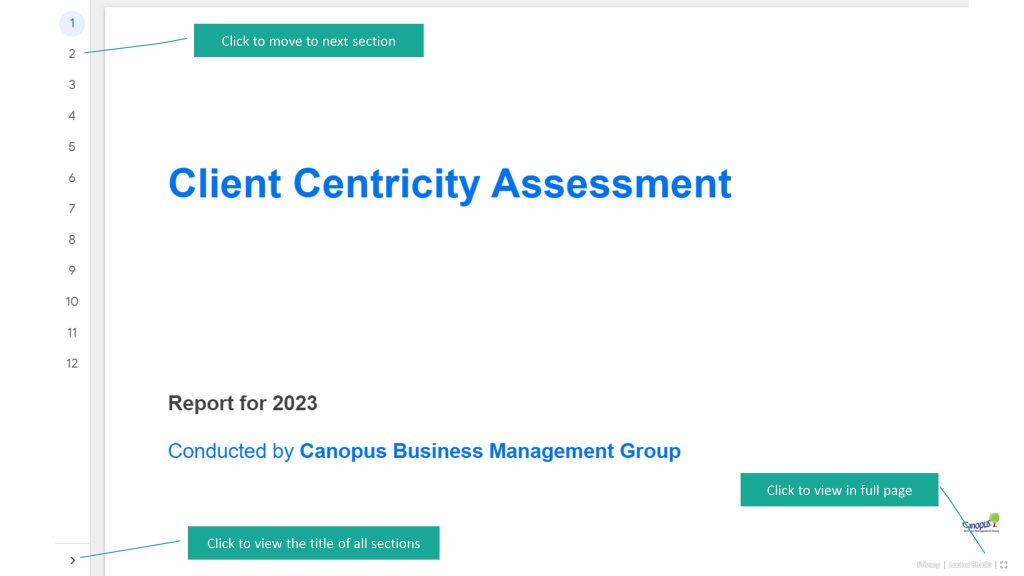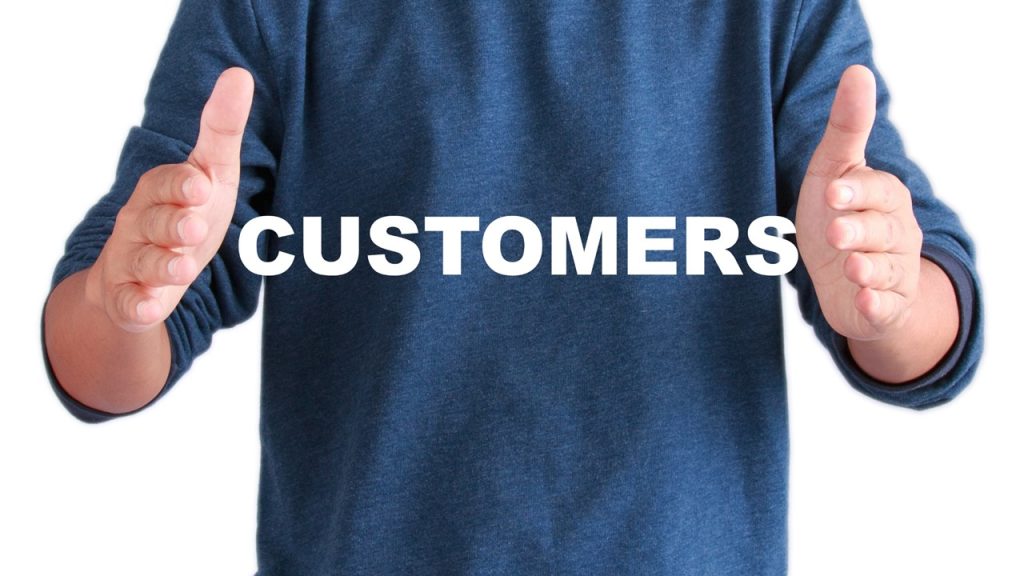Background:
An ITES arm of a big software company which works with enterprises across industries wanting to improve its client relationship
Condition:
One of their large account ($1Bn) wanted to terminate their enterprise contract due to issues with ITES services. Hence main focus was to prevent the churn by short term fix and long term actions.
Big 5 Actions:
- Based on Client Interviews, employee interview and discovery, identified 4 actions to be immediately initiated (Service quality, Analysis, Client review framework, Org structure change). Facilitated the agreement of action with clients
- Identified delight opportunities to clients by performing Horizontal/Vertical synergy studies and subsequent prioritization roadmap
Background:
A leading business services firm provides B2B telecom Solution and services in India wanting to improve responsiveness in pre-sales
Condition:
- Clients are unhappy after first month bill. Payment disputes and escalations leading to retail brand damage
- Benchmarking study identified company is far behind all competitors in RFQ or leads
Big 5 Actions:
- After gemba, interviews and process-walk-thro three broad issues came out.
- Process not capable to respond to leads and RFQs at speed
- Pre-sales process is broken
- Post feasibility study – accountability issues
- The entire End-to-End business process spanning all regional teams was re-engineered and later digitized.
- Mentoring of re-engineering project teams Leadership workshop on customer experience & client handling across the BU
Background
A leading global ship management company with 600 ships under management and 24k seafarers wanting to strengthen is ‘competence’
Condition:
- Frequent escalations to senior management from ship owners.
- Some fleet owners terminated contracts
- Regulatory show stoppers On-shore teams (front line) are disengaged
Big 5 Actions:
- Process Definition and Digitization of EIR and VOC Management
- Employee Client Centricity Attitude Dipstick
- Core Process & Service Management Metrics Development
- Structure implementation of Central Function for Client Centricity
- Leadership workshop for digital transformation roadmap
- Mentor digitization projects
- Employee Customer Centricity Development Plan

“Client Centricity: Transient Lessons”: In the realm of handling clients in B2B businesses like manufacturing, Industrial, IT, ITES, Tech, Telecom & other services, a vital lesson emerges from the transient nature of all things like deliveries, orders, escalations, daily interactions and heated moments. This lesson underscores the importance of cherishing prosperous moments and relishing them to the utmost with your colleagues and your clients. A true client centric journey in B2B is about making it a practice to commemorate the small successes of your organization and your clients’ (though you may not be part of it). Simultaneously, during the challenging phases, it’s crucial to remind yourself that difficulties are not perpetual. Just as clouds eventually yield to the sun’s radiance, adversities too shall pass. But at the end of it, your relationship with your client will be stronger. So nurture patience and maintain faith in the process, knowing that brighter days are on the horizon.
#nilakantasrinivasan-j #canopus-business-management-group #B2B-client-centric-growth

Let’s see why client centricity among workman in manufacturing shop floor is important. The workmen on the shop floor of a manufacturing supplier can contribute effectively to customer satisfaction and the success of the organization by adapting client-centric mindset in their work place. However, the enablement is in the hands of management. The management can proactively develop appropriate mechanisms such as training, reward and recognition, daily work management practices, leadership small talks, success stories, anecdotes, building role models, creating healthy contests, etc, to imbibe these qualities in their workmen. This is really where the creativity of the management comes in.
- Pride in Workmanship: Taking pride in their craftsmanship and the products they produce is crucial. When workmen view their work as a contribution to the client’s success, they are more likely to pay attention to detail and ensure high-quality output.
- Ownership and Accountability: Instead of trying to inwardly focus on work as tasks that are one’s responsibility, embracing a sense of ownership over one’s work based on its impact on the client encourages workmen to take responsibility for the final product’s quality, timely delivery and contingencies that weren’t planned
- Client Satisfaction as a Measure of Success: In most organizations, workmen and their supervisors take an objective view of meeting production targets and conforming to the quality standards as a primary measure of success. However, viewing client satisfaction as a key metric for measuring the success of their work reinforces the importance of meeting client needs and expectations.
- Replacing Conformance mindset with Empathy: Clients’ needs may change, and workmen should be flexible enough to adapt and accommodate these changes without compromising quality or delivery timelines. Encouraging workmen to put themselves in the client’s shoes helps them better understand the importance of their role in delivering products that meet the client’s needs and expectations.
Free Assessment
This diagnostic tool will provide you customized report with our recommendations immediately.
Are you a B2B leader who is unsure about how to achieve SUSTAINABLE business growth and do you want to have predictable and consistent growth in your organization?
Then take this quick self-assessment diagnostic and you will have an idea of what your priorities should be?
This simple yet powerful FREE assessment is to evaluate your company’s sustainable growth potential.
- You will have to answer 20 questions that relates to your company.
- You will immediately get a customized growth diagnostic report called Sustainable Business Growth Assessment that includes insights and our recommendations
- This report will be delivered on browser & by email
Take the Free Assessment Now. It won’t take 15 mins.
- Respect for the Client’s Investment: Clients invest time, money, and trust in the products they purchase. A client-focused mindset involves treating these investments including the intangibles with respect and ensuring that the products reflect that commitment. Every client may be different though we are supplying the same items. Workmen should be educated to understand that the specific needs, preferences, and expectations of the clients they are serving are subjective and even change from time to time. This understanding allows them to accept reality rather than fight it. Ultimately it will lead to better alignment with clients and with management staff.
- Client Oriented Continuous Improvement: Having the mindset to always seek ways to improve processes, eliminate inefficiencies, and enhance product quality is good, but unfortunately, most manufacturing organizations use their workmen’s creative energy in cost reduction. It is vital to prioritize Kaizens that demonstrate a commitment to delivering better value to clients over time.
- Effective Communication: The need for seamless and proactive communication is something all workmen to be educated on. They should communicate proactively and openly inform anything they feel impacts their client deliverables. This is in contrast to restricted and limited communication style where they share information only when asked and that too in a limited fashion. A collaborative approach helps prevent miscommunications that could affect the final client satisfaction long term relationships.
- Strive for Excellence: Workmen should be encouraged to actively seek client feedback. The openness to accept criticism sometimes contradicts the quality of pride in workmanship. With the right balance, this will drive product quality and client experience.
If you are planning to improve your client centric business growth in manufacturing, please feel free to reach out to business.support@collaborat.com
Strategic account management (SAM) and a client centric strategy are related concepts, but they have distinct differences. Here’s a comparison to help you understand how they differ:

Strategic Account Management (SAM):
- Focus: SAM is a specific approach that focuses on managing and nurturing relationships with key accounts or strategic customers. It involves a dedicated team that works closely with these high-value accounts to maximize their value and drive mutual growth.
- Target: SAM is typically employed for a select number of strategic accounts that have significant revenue potential or strategic importance to the company. These accounts are often large, complex, or have unique needs.
- Objectives: The primary goal of SAM is to deepen and expand relationships with strategic accounts, leading to increased revenue, higher customer satisfaction, and long-term partnerships. SAM teams aim to understand the strategic goals of the client and align the company’s offerings accordingly.
- Approach: SAM involves a proactive and tailored approach, where the SAM team acts as a strategic advisor to the client, provides personalized solutions, and seeks to become a trusted partner. It emphasizes long-term relationship-building and collaborates closely with clients to identify opportunities and address challenges.
Customer-Centric Strategy:
- Focus: A customer-centric strategy is a broader organizational approach that puts the customer at the center of all activities. It involves aligning the entire company’s resources, processes, and strategies to meet customer needs and preferences.
- Target: A customer-centric strategy applies to all customers and prospects across the entire customer base, rather than being limited to a select group of strategic accounts.
- Objectives: The primary objective of a customer-centric strategy is to create a superior customer experience, enhance customer satisfaction, and build long-term loyalty. It aims to understand customer needs, deliver personalized solutions, and continuously adapt and improve based on customer feedback.
- Approach: A customer-centric strategy requires a customer-focused culture and mindset throughout the organization. It involves gathering customer insights, implementing customer feedback mechanisms, and aligning various departments to work cohesively in delivering value to customers.
In summary, while SAM is a specialized approach focused on managing key strategic accounts, a customer-centric strategy encompasses a broader organizational philosophy that prioritizes the needs and satisfaction of all customers.
#nilakantasrinivasan-j #canopus-business-management-group #B2B-client-centric-growth
Welcome to this report on Client Centricity Assessment based on a survey conducted recently with employees.
This is an interactive report and so you will be able to slice the data and drill down to granular level. Please follow the following instructions for navigation:

#nilakantasrinivasan-j #canopus-business-management-group #B2B-client-centric-growth

Leadership plays a crucial role in ensuring that client churn is minimized or eliminated in B2B organizations. Here are some ways that leadership can drive this effort:
- Establish a customer-focused culture: Leaders should create a culture that prioritizes customer satisfaction and success, encouraging employees to put the customer at the center of all decision making.
- Invest in customer service: Leaders should ensure that the organization has the resources and tools necessary to provide excellent customer service, including a knowledgeable and responsive support team.
- Foster open communication: Leaders should foster open communication with customers, regularly seeking feedback and proactively addressing any issues that arise.
- Encourage continuous improvement: Leaders should encourage a continuous improvement mindset, encouraging teams to continuously seek out ways to enhance the customer experience and reduce churn.
- Empower employees: Leaders should empower employees to make decisions and take action to address customer needs, ensuring that they have the resources and support they need to succeed.
- Analyze and act on customer data: Leaders should regularly analyze customer data to identify trends and insights, and take action to address any issues that arise.
- Lead by example: Finally, leaders need to lead by example, demonstrating a strong commitment to customer success and continuous improvement.
Free Download
Download your copy of customer churn & retention management report
Our research is to understand the best practices among enterprises across sectors in Indian region and suggest Customer Churn & Retention Management as a concept in its infancy, barring few sectors that experience high churn, such as Telecom. At a time when the revenue growth by customer acquisition is stalling, many sectors are unprepared to handle this challenge with scientific and proven methods.

By taking a proactive and customer-focused approach, B2B organizations can ensure that client churn is minimized or eliminated, setting the stage for long-term success and growth.
#nilakantasrinivasan-j #canopus-business-management-group #B2B-client-centric-growth

Improving and sustaining higher sales win rate in B2B organizations requires a combination of technical skills, business acumen, and interpersonal skills. Here are some specific skills and capabilities that are critical for employees to drive this effort:
- Market and customer knowledge: Employees need to have a deep understanding of their target market and customers, including their needs, challenges, and buying process.
- Product knowledge: Employees need to have a deep understanding of the products or services they are selling, including their features, benefits, and competitive differentiation.
- Sales process expertise: Employees need to have a thorough understanding of the sales process, including lead generation, qualification, and closing techniques, and be able to execute it effectively.
- Communication skills: Employees need to have excellent communication skills, including the ability to effectively present products and services, negotiate with customers, and handle objections.
- Solution selling skills: Employees need to be able to understand customer needs and challenges, and develop and present solutions that meet those needs effectively.
- Strategic thinking: Employees need to be able to think strategically about their sales efforts, considering market conditions, competitive landscape, and customer needs, to develop a winning approach.
- Resilience: Employees need to be resilient, able to handle rejection and keep moving forward in the face of setbacks, in order to achieve their sales goals.
By developing these skills and capabilities, employees can help B2B organizations improve and sustain higher sales win rates, setting the stage for long-term success and growth.
#nilakantasrinivasan-j #canopus-business-management-group #B2B-client-centric-growth

B2B organizations can suffer from high client churn for a variety of reasons. Some common reasons include:
- Lack of differentiation: When B2B organizations offer similar products or services as their competitors, it can be difficult to retain customers and prevent them from switching to a competitor.
- Poor customer experience: B2B organizations may struggle to provide a seamless and positive customer experience, leading to frustration and a high churn rate.
- Inadequate customer service: Poor customer service, such as slow response times and a lack of proactive support, can result in dissatisfaction and a high churn rate.
- Unmet customer needs: When B2B organizations fail to understand and meet the evolving needs of their customers, it can lead to a lack of satisfaction and a high churn rate.
- Price and value mismatch: If customers feel that the price of a product or service is not aligned with its value, they may be more likely to switch to a competitor.
- Competition: Increased competition in the market can make it easier for customers to switch to a competitor, leading to a higher churn rate.
- Changes in the customer’s business: Changes in a customer’s business, such as mergers and acquisitions or shifts in their product offerings, can lead to a change in their needs and a decision to switch to a competitor.
By understanding these factors and taking proactive steps to address them, B2B organizations can reduce client churn and drive sustainable growth.
#nilakantasrinivasan-j #canopus-business-management-group #B2B-client-centric-growth

Some popular client centric strategies in B2C include:
- Personalization: Personalization means tailoring the customer experience to the individual’s preferences and needs. This can be done through targeted marketing campaigns, personalized product recommendations, or customized services. For example, Netflix uses customer data to recommend personalized TV shows and movies, Amazon uses customer data to recommend personalized products, and Spotify uses customer data to create personalized playlists.
- Empowering the customer: This strategy involves giving customers control over their experience by providing them with the information and tools they need to make informed decisions. This can be done through online self-service portals, chatbots, or mobile apps. For example, airlines like Delta and United provide customers with mobile apps that allow them to check-in, choose seats, and track their flight status.
- Listening to feedback: This strategy involves actively seeking and responding to customer feedback. This can be done through surveys, focus groups, or social media monitoring. For example, Zappos encourages customers to leave reviews on their website, and Starbucks has a mobile app that allows customers to provide feedback and track their rewards.
- Providing excellent customer service: This strategy involves providing prompt, helpful, and friendly service to customers. This can be done through a dedicated customer service team, or by providing customers with easy access to information and support. For example, Nordstrom is known for its exceptional customer service, and Apple has a dedicated support team that provides customers with assistance over the phone or online.
- Creating a sense of community: This strategy involves building a sense of community among customers by creating a shared experience or shared values. This can be done through social media, customer events, or loyalty programs. For example, Nike creates a sense of community by hosting running events and creating social media campaigns that encourage customers to share their athletic achievements.
Free Download
Download your copy of a research report on B2B customer experience practices in India.
Our research is to understand the best practices amongst the enterprises across various sectors in Indian region when it comes to Customer Experience Transformation. Customer Experience as a concept is generally not given the required attention is B2B sector. With increase in the competition in the market, customer experience is one of the major thing which defines the performance of the organization.

B2B companies can also benefit from implementing customer-centric strategies. Some client-centric strategies that work well for B2B companies include:
- Building long-term relationships: This strategy involves building a strong, long-term relationship with clients by understanding their business needs and goals, and providing them with tailored solutions. This can be done through regular communication, account management, and customer service. For example, a software company might provide a dedicated account manager for a large enterprise client, and work closely with them to understand their specific needs and goals.
- Providing value-added services: This strategy involves providing additional services that go beyond the core product or service offered. This can include training, consulting, or support services. For example, a manufacturing company might provide training for the maintenance and repair of their equipment to their clients.
- Offering customized pricing and contract options: This strategy involves offering customized pricing and contract options to clients based on their specific needs and budget. This can be done through volume discounts, flexible payment terms, or customized service plans. For example, a consulting firm might offer a discounted rate to a client who signs a long-term contract.
- Focusing on the client’s success: This strategy involves making the client’s success a priority, and aligning the company’s goals with the client’s goals. This can be done through regular communication, performance metrics, and regular reviews. For example, a digital marketing agency might track and report on the performance of a client’s online campaigns and make adjustments as needed to improve results.
- Anticipating client’s needs: This strategy involves anticipating the client’s needs, and proactively providing solutions. This can be done through regular communication, account management, and market research. For example, a logistics company might conduct regular surveys with clients to understand their evolving needs and then develop new solutions to meet those needs.
All of these strategies help B2B companies to understand and meet the specific needs of their clients, which leads to increased client satisfaction, loyalty, and long-term business relationships, all of which are essential for sustainable growth.
#nilakantasrinivasan-j #canopus-business-management-group #B2B-client-centric-growth

A widely accepted sustainable growth strategies that work well are building a strong brand and reputation. This can be done by providing high-quality products or services, excellent customer service, and consistently delivering on promises. Building a strong brand and reputation will attract new customers through word-of-mouth and positive reviews, and also retain existing customers by creating a sense of trust and loyalty. But to build trust and loyalty companies need good quality products and superior customer experience. So implementing this strategy may not be very easy.
On the other hand, Customer centricity can be considered a sustainable growth strategy. Customer centricity is the approach of putting the customer at the center of all business decisions and actions. This approach helps to create a positive customer experience, which can lead to increased customer satisfaction, loyalty, and advocacy.
When a company puts the customer first and prioritizes their needs, it can help to build trust and a positive reputation. This can lead to increased customer retention, repeat business, and positive word-of-mouth, which are all essential for sustainable growth. By understanding the needs and wants of their customers, a company can also innovate and create products and services that meet those needs, which can lead to increased sales and revenue growth.
Additionally, a customer-centric approach can also help a company to better understand and segment their customer base, which can be used to create targeted marketing campaigns and increase the effectiveness of sales and distribution efforts.
So, Customer centricity is a sustainable growth strategy because it helps to create a positive customer experience, builds trust and reputation, increases customer retention, and helps a company to better understand and target their customer base, all of which are essential for long-term growth. So, Client centricity or customer centricity in turn builds brand and reputation.
Free Assessment
This diagnostic tool will provide you customized report with our recommendations immediately.
Are you a B2B leader who is unsure about how to achieve SUSTAINABLE business growth and do you want to have predictable and consistent growth in your organization?
Then take this quick self-assessment diagnostic and you will have an idea of what your priorities should be?
This simple yet powerful FREE assessment is to evaluate your company’s sustainable growth potential.
- You will have to answer 20 questions that relates to your company.
- You will immediately get a customized growth diagnostic report called Sustainable Business Growth Assessment that includes insights and our recommendations
- This report will be delivered on browser & by email
Take the Free Assessment Now. It won’t take 15 mins.
Another effective sustainable growth strategy is building a strong distribution network. This includes developing partnerships with other businesses, distributors, and retailers to expand the reach of products or services. Building a strong distribution network allows a business to reach new markets and customers without the need for significant additional investment.
Another key element of sustainable growth strategy is diversifying the revenue stream. This can be achieved by introducing new products or services, or expanding into new markets. Diversifying the revenue stream helps to mitigate the risks associated with relying on a single product or service, and also opens up new opportunities for growth.
Finally, investing in research and development (R&D) is an important aspect of sustainable growth strategy. This can help a business stay ahead of the competition by continuously improving existing products or services, and also developing new ones. Investing in R&D can also lead to the creation of new markets or the discovery of new ways to reach existing markets.
All of these strategies work well together to create a solid foundation for long-term growth, by making customer or client centricity a way of life, by creating a strong brand and reputation, building a strong distribution network, diversifying revenue streams, and investing in research and development.
#nilakantasrinivasan-j #canopus-business-management-group #B2B-client-centric-growth
Sign-up for collaborat newsletter
